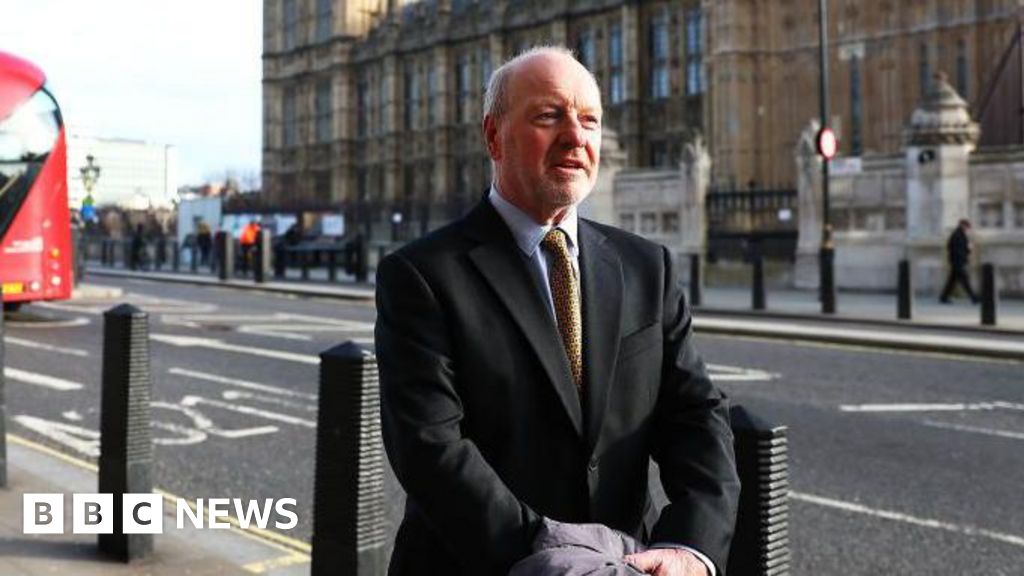Gareth Lewis,Wales political editor and
Steffan Messenger,Wales environment correspondent
 BBC
BBCA first-of-its-kind nuclear power station is to be built on Anglesey, bringing up to 3,000 jobs and billions of pounds of investment.
The plant at Wylfa, on the Welsh island’s northern coast, will have the UK’s first three small modular reactors (SMR), although the site could potentially hold up to eight.
Work is due to start next year with the aim of generating power by the mid 2030s.
Prime Minister Sir Keir Starmer said that Britain was once a world leader in nuclear power but “years of neglect and inertia has meant places like Anglesey have been let down and left behind. Today, that changes.”
The news was also welcomed by First Minister Eluned Morgan, who said she had been “pressing the case at every opportunity for Wylfa’s incredible benefits”.
Using the Welsh name for Anglesey, she described it as “the moment Ynys Môn and the whole of Wales has been waiting for”.
The project, which could power about three million homes, will be built by publicly owned Great British Energy-Nuclear and is backed by a £2.5bn investment from the UK government.
SMRs work similarly to large reactors, using a nuclear reaction to generate heat that produces electricity – but are a fraction of the size, with about a third of the generating output.
Ed Milliband, Secretary of State for Energy and Climate Change, called the announcement “exciting” and said Britain is in the race for new reactors.
Simon Bowen, chair of Great British Energy-Nuclear, called the announcement an “historic moment for the UK”.
“These first SMRs at Wylfa will lay the groundwork for a fleet-based approach to nuclear development, strengthening the UK’s energy independence and bringing long-term investment to the local economy.”
Anglesey councillor Gary Pritchard said it was an “important step forward for new nuclear build on Ynys Môn”.
“If, as we hope, these plans come to fruition – it will mean economic certainty and prosperity for decades to come.”
The company has also been tasked with identifying potential sites for another large-scale nuclear power plant, similar to those being built at Hinkley Point in Somerset and Sizewell in Suffolk, which have the potential to power the equivalent of six million homes.
It will report back by autumn 2026, and has been requested by Energy Secretary Ed Miliband to consider sites across the UK, including in Scotland, officials said.
It is not clear whether the SMR plans, which are smaller and more straightforward to build, rule Wylfa out from being considered after it was designated the preferred location in 2024 by the previous UK Conservative government.
The decision to opt for small modular reactors at Wylfa was criticised by the US ambassador Warren Stephens, who said he was “extremely disappointed” by the decision.
He had been urging ministers to commit to a large-scale plant, with US firm Westinghouse having reportedly presented plans to build a new gigawatt station at the site.
“If you want to get shovels in the ground as soon as possible and take a big step in addressing energy prices and availability, there is a different path, and we look forward to decisions soon on large-scale nuclear projects,” Mr Stephens said.

‘Nuclear equivalent of an Ikea chair’
One industry expert described the announcement as “incredible”.
Prof Simon Middleburgh, director of the Nuclear Futures Institute at Bangor University, said: “They’re smaller than the average reactor, built in a modular manner in factories and shipped to the site to be put together a bit like an Ikea chair.”
The planned SMRs “fit nicely” with the existing grid capacity at the Wylfa site, offering a similar electricity output as the old power plant currently being decommissioned, he added.
There were “a few more hurdles to go through”, he cautioned – from securing regulatory approval, building the factories required to construct the SMRs and training the workforce that will run them.
Opponents of the project point to the fact that a long-term storage facility for the UK’s nuclear waste is yet to be agreed upon and say investment in renewable energy schemes – wind, wave and tidal – is what Anglesey needs.
Dylan Morgan of campaign group People Against Wylfa-B told BBC Wales the proposed SMRs were far from “small” and were in fact “an unnecessarily big development of an unproven technology”.
“Modular reactor technologies have been touted by many companies internationally but are still only plans on paper,” he said.
The government sees them as a secure, reliable, affordable and low carbon energy system and is convinced that, with investment, SMRs will create thousands of jobs and boost manufacturing.

Wylfa beat off competition from another site at Oldbury in Gloucestershire, with the reactors designed by British engineering firm Rolls-Royce, subject to final contracts, which are expected later this year.
The UK government said the plant would help provide energy independence.
The old nuclear power plant at Wylfa was switched off in 2015 and previous plans for a large-scale replacement fell through in 2021.
The company behind the scheme – the Japanese industrial giant Hitachi – cited spiralling costs and a failure to reach agreement with the UK government over funding.
There is a huge political component to the announcement, with Labour’s leadership in Westminster keen to show that it means business when it comes to big investment in infrastructure projects
In Wales, the first minister has been pushing hard for Wylfa – and the announcement comes just six months before the Senedd election.
Eluned Morgan has been trying to strike a balance: differentiating the Welsh party from UK Labour, but also pushing for extra funding, further devolution of powers and big investment announcements from her UK colleagues.
She has certainly got the latter, although plenty of other issues such as reform to the way Wales is funded and devolution of the Crown Estate – the body which owns much of the Welsh coastline and vital to future wind power – remain unresolved.




